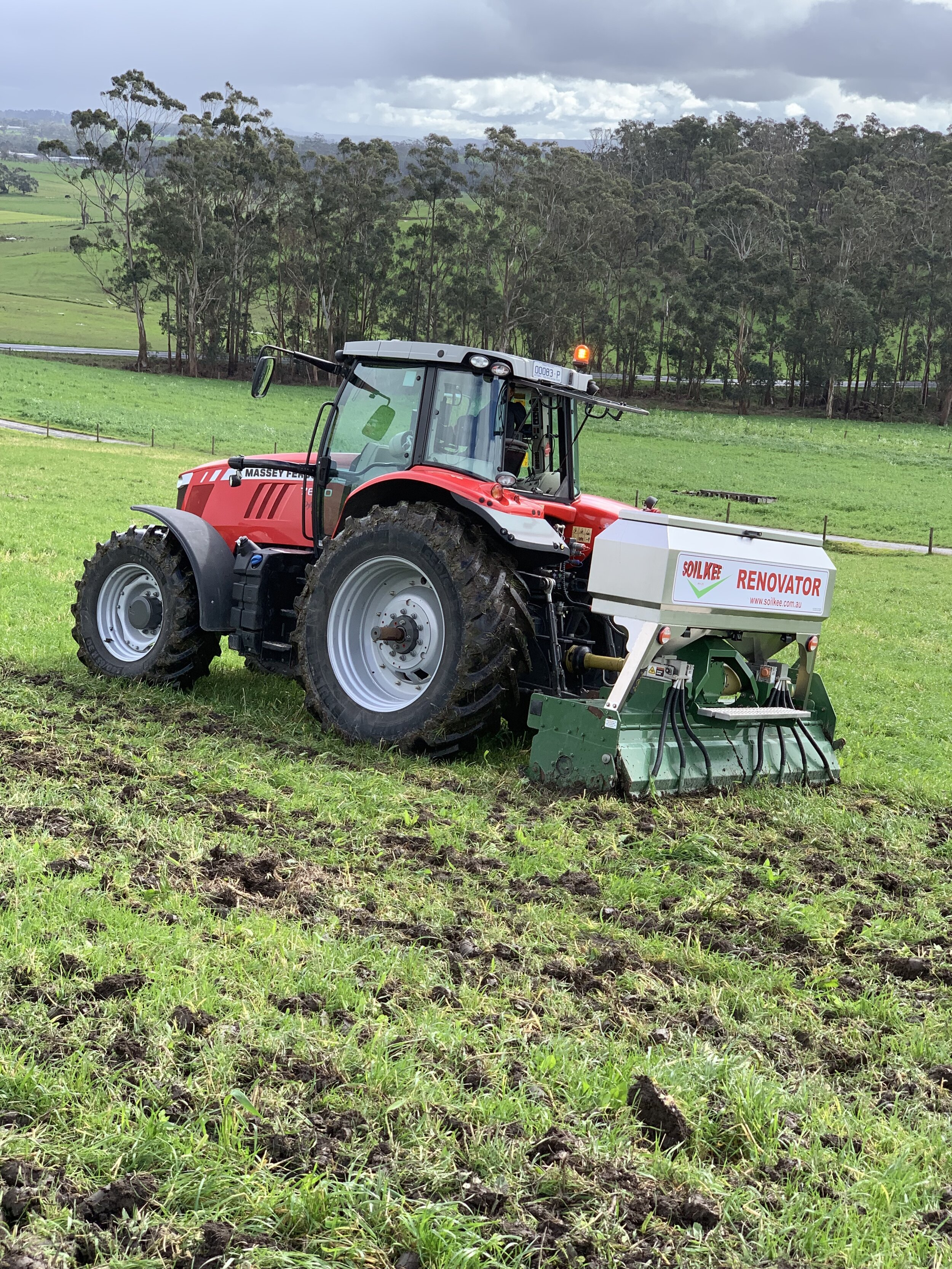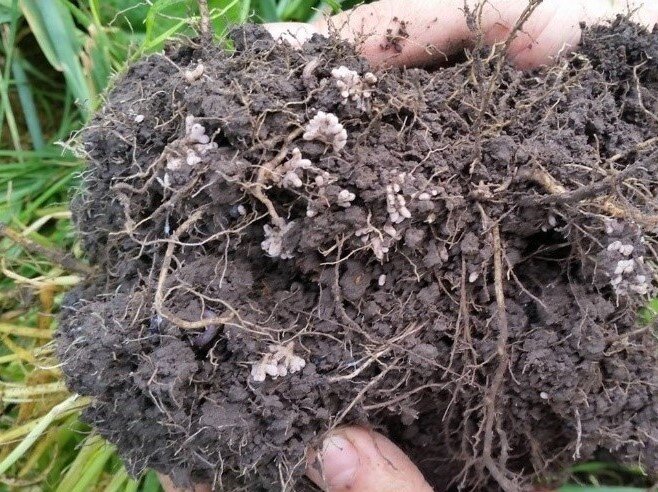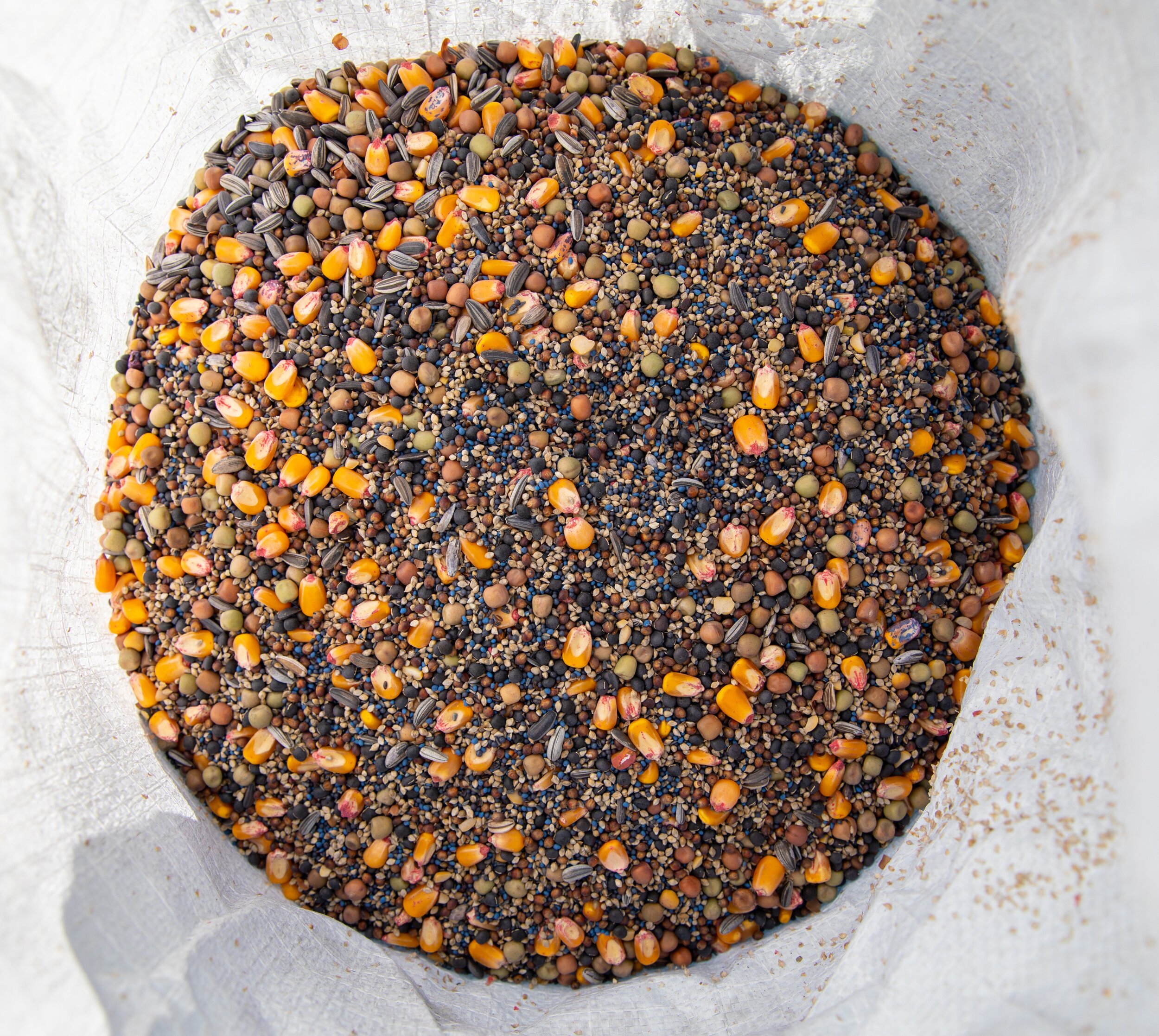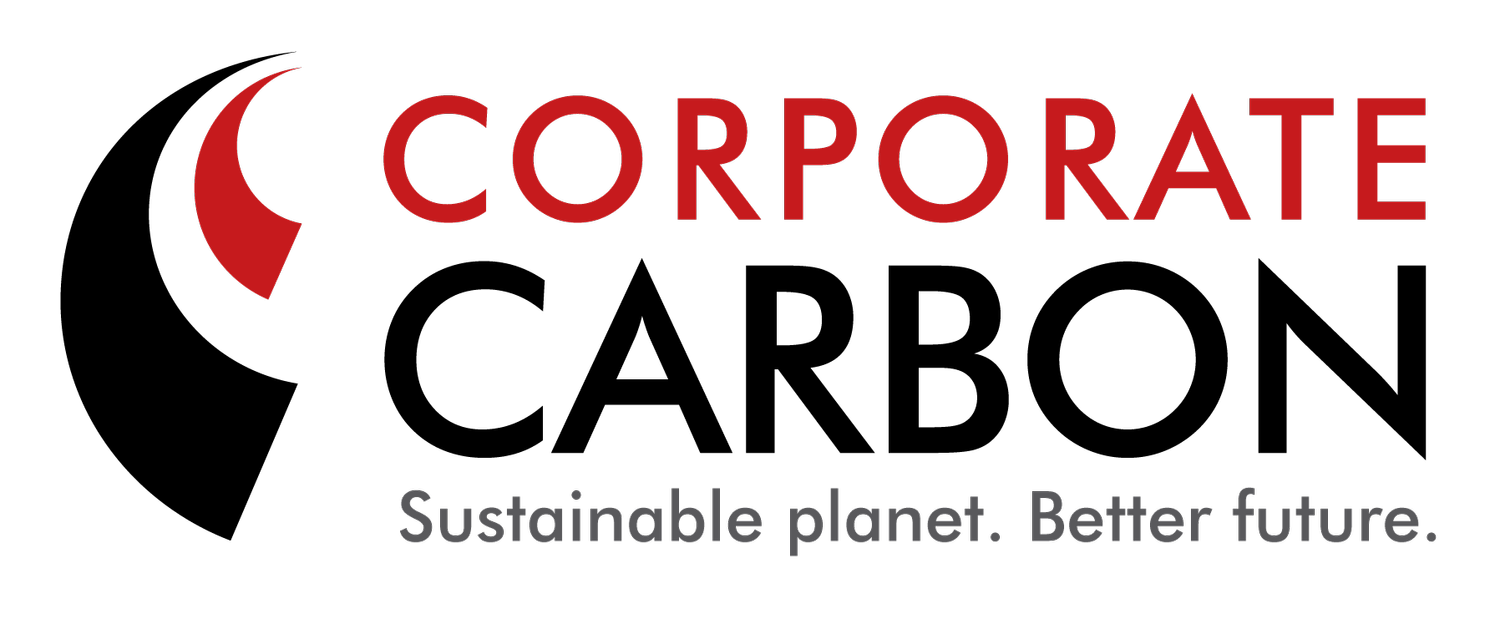
Grounds Keeping Carbon Project
Soil Carbon Methodology
Project overview: how is carbon sequestered?
Measurement of Soil Carbon Sequestration in Agricultural Systems
This method applies to projects that store carbon by managing agricultural land to encourage increases in soil carbon.
Increases occur by building carbon stores in the soil.
As part of the Australian government’s Climate Solutions Fund (CSF) projects are awarded Australian Carbon Credit Units (ACCUs) for each tonne of carbon dioxide-equivalent sequestered as a result of activities implemented.
Soil Carbon activities include:
applying nutrients, lime or gypsum
installing new irrigation with water sourced from privately-funded farm water efficiency savings
seeding a pasture, and
changing stocking rates, or the duration or intensity of grazing.
Projects store carbon for a 25 or 100 year period with ACCUs received each time the report increases soil carbon.
Sampling and measurement
Sampling soil, as part of the project, measures changes in soil carbon and provides information about soil nutrition and health for each carbon estimation area.
After the baseline sampling round, land management activities must not disturb the soil any deeper than the sampling depth.
What is soil carbon?
Soil carbon is a part of the organic matter in soil. It comes from the breakdown of plants, microorganisms and animal waste material.
Participating in a soil carbon project can provide:
diversified revenue
farm benefits
ecosystem health, and
greater understanding of agricultural soil.
Increases in soil carbon can be dependent on existing carbon levels, soil type, management history, rainfall and prevailing weather (for example, if the land is in drought).
Eligibility
To register participants must:
identify eligible land on property i.e. land was pasture, cropping (including horticulture) or bare fallow for the past 10 years
establish legal right for the project site
obtain regulatory approvals and consent from those with an eligible interest in the project land
ensure the project meets the newness requirement.
As part of registration, participants need to prepare a land management strategy (explaining proposed activities) and calculation of expected credits.
The first soil carbon credits generated in Australia
The Grounds Keeping Carbon Project is located at Hallora, in the Gippsland region of Victoria, on Niels Olsen’s property and was registered with Corporate Carbon and AgriProve.
AgriProve is Corporate Carbon’s sister company.
The team delivers carbon farming solutions for landowners and farmers.
The business was created to enable projects like Grounds Keeping to register as part of a CSF project and earn ACCUs.
Using the 'Soilkee Renovator', cultivation, mulching, aeration and mixed species seeding are combined to effectively build topsoil and soil carbon organic carbon.
Soilkee aims at: ‘enabling utilisation of farmland and water resources by continuous replenishment of the soil for a more profitable, productive, healthy and sustainable agriculture globally’.
The first soil carbon credits in Australia have been generated for this project.
The Chair of the Clean Energy Regulator, the government body responsible for administering the CSF, said at the crediting:
‘This is the first time in Australia a project has generated carbon credits on the land by increasing levels of soil carbon.’
‘This project is an example of the co-benefits that can be achieved under the Emissions Reduction Fund (now the CSF), and a beacon of innovation in the agricultural sector.’
406 ACCUs were credited at this historic event, on the 14th of March 2019.
Co-benefits and other outcomes are detailed below.
Legacy projects
Note: Grounds Keeping Carbon Project is using an historic method, ‘Carbon Credits (Carbon Farming Initiative) (Sequestering Carbon in Soils in Grazing Systems) Methodology Determination 2014’.
In order to simplify methodologies for readers this page reflects the 2018 method, noted in the first column in this section.
AgriProve are project proponents for a small number of legacy projects from the 2014 method.
All other projects are registered under the 2018 method.
AgriProive work with over 150 farms on soil carbon projects.
Project operations and outcomes
Creating soil carbon
The Soilkee Pasture Renovator is a technology that was invented by Niels Olsen as an innovative approach to facilitating pasture cropping in one machinery pass:
seeding while aerating to actively assist germination.
This method works to regenerate soil life and improve productivity.
Work over the development of the technology has seen consistent improvements in pasture productivity throughout the Gippsland region, accompanied by an increase in soil organic carbon.
Recent new developments and tests on the Olsen property with the technology have been to accelerate pasture renovation through intensive mulching of pasture fodder and incorporating this additional organic material into the pasture cropping process.
This acts to ‘increase carbon inputs to the soil in the project area’.
Historic Action on the Property
The previous management actions, that were carried out on Olsen’s family farm during the 5 year period immediately before this application for declaration of the project as an eligible offsets project, was made related primarily to beef cattle production (prior to this the farm was operated as a dairy).
The beef cattle production to date has involved:
land that was continuously under permanent pasture
land that was grazed by production livestock
cattle as production livestock.
Other on farm management activities with respect to beef cattle production included:
management of stocking rates to match pasture utilisation (animal nutrition)
fenced paddock operation under a system of continuous set stocking
livestock welfare
farm maintenance (fencing, roads, dams)
pasture cropping through the use of the Soilkee Pasture Renovator.
New management activities
The proposed new management action that has been implemented as part of the project mechanism for the soil carbon project is the combined fodder mulching and pasture cropping through the Soilkee Pasture Renovator technology.
Note that the project only proceeded at a property wide scale because it gained registration under the Emissions Reduction Fund (now the CSF).
Without the projected carbon abatement revenue the cost of the foregone fodder would not have made commercial sense.
Land details
The land was a permanent pasture prior to the implementation of the project, thus fulfilling criteria in the method.
The project has been divided into carbon estimation areas that have been identified as per method requirements and recorded in line with the sampling plan.
Sampling
Soil carbon projects rely on random allocation of sampling locations to be undertaken without bias to estimate changes in carbon stock, which has been the case at the Gippsland project site.
All projects using the method require spatial locations of soil sampling to be allocated randomly for the baseline and subsequent sampling rounds.
The use of a psudo-random number generator, is required, with a defined, or known, seed number to allocate the random spatial locations.
The Clean Energy Regulator must have the longitude and latitude of the sampling prior to each sample being taken.
Sampling in accordance with a proposed process and plan must not be abandoned and started again, unless in exceptioneal circumstances.
A full list of the requirements that all soil carbon projects need to adhere to is found on the Clean Energy Regulator’s Sampling Guidance for Measurement-Based Soil Carbon Methods document.
Benefits of activities
The Soilkee operations on property activates the soil biology and improves productivity, nutrient availability and water-holding capacity.
‘Dry matter yields have increased from 7 tonnes/hectare five years ago to 20 t/ha now, without applying any nitrogenous fertiliser’ Niels Olsen noted at a farming event with AgriProve.
High levels of soil carbon is equating to high levels of productivity and profitability for the farm.
The innovative process aerates the soil, builds organic matter, dresses pasture and plants a mixed crop seed, which in turn increases biological activity.
This is a core benefit for all living things on the property, from bacteria, fungi and worms to cows.
Other significant indicators of the process on the property include:
the increase of soil carbon per ha allows for a longer growing season and increased drought resilience
pasture cropping leads to a boost in fodder for grazing animals
increased growth and root turnover (illustrated by the image of the tillage radish above) has built organic matter and leads to increased soil organic carbon
the farming approach to pasture cropping provides livestock balanced nutrition and additional feed diversity, in addition to nitrogen fixing from legumes
this improves soils and increases feed quality and quantity: the action of the ‘kees’ simultaneously mulches plant matter into the soil, aerates the top soil, mechanically assists rainfall infiltration, and cultivates a linear seed bed, while disturbing only 17% of the surface.
biological activity is promoted, creating more biodiversity in the form of bacteria, fungi and worms
mixed species planting provides organic matter and nitrogen from legume nodulation
new technical jobs have been created through the enhanced agricultural methods.
Co-benefits: enabling soil carbon credits for farms
The innovative Soilkee farming system builds soil carbon in pastures at rates comparable with forests.
AgriProve is proud to receive the first soil carbon credits under the Emissions Reduction Fund (now the CSF).
The credits will count towards Australia's Paris target and is a win for regenerative agriculture.











Co-benefits: increased biodiversity and income diversification
‘World First Soil Carbon Project a Giant Leap for Humankind’
The project team are really excited to provide a link to an article written for the Leonardo DiCaprio Foundation on the range of benefits that have been created due to this projects.
‘Not only will these soil carbon credits be the first to count towards Australia’s national targets under The Paris Agreement, but they are the first soil credits worldwide to be eligible under Paris’, said project facilitator, Matthew Warnken.







Project overview: United Nations Sustainable Development Goals (UN SDGs)
Zero hunger
Soil carbon projects enhance the productivity of land and soil by various methods such as mixed species cropping and aerating the soil, which are key activities in the Grounds Keeping project.
This increased attention to the quality of the soil enables increased yields on property. Illustrated most poignantly by the roots and tubers, and achieved in similar ways for other crops (such as the peas in the image above) on the project site. Additionally the use of mixed species crops increases value of less-well known seeds, while the entire agricultural process that has been implemented limits overall climate risk, i.e. to droughts.
The activities align with the following UN SDG targets and indicators:
Target
2.3: By 2030, double the agricultural productivity and incomes of small-scale food producers, in particular women, indigenous peoples, family farmers, pastoralists and fishers, including through secure and equal access to land, other productive resources and inputs, knowledge, financial services, markets and opportunities for value addition and non-farm employment.
Indicators
2.3.1: Volume of production per labour unit by classes of farming/pastoral/forestry enterprise size.
2.3.2: Average income of small-scale food producers, by sex and indigenous status.
Target
2.4: By 2030, ensure sustainable food production systems and implement resilient agricultural practices that increase productivity and production, that help maintain ecosystems, that strengthen capacity for adaptation to climate change, extreme weather, drought, flooding and other disasters and that progressively improve land and soil quality.
Indicators
2.4.1: Proportion of agricultural area under productive and sustainable agriculture.
Target
2.5: By 2020, maintain the genetic diversity of seeds, cultivated plants and farmed and domesticated animals and their related wild species, including through soundly managed and diversified seed and plant banks at the national, regional and international levels, and promote access to and fair and equitable sharing of benefits arising from the utilization of genetic resources and associated traditional knowledge, as internationally agreed.
Indicators
2.5.2: Proportion of local breeds classified as being at risk, not-at-risk or at unknown level of risk of extinction.
Quality Education
Both the team at Niels OIsen farm and AgriProve have and continue to run ‘field days’ and programs for farmers, landholders and community members to enhance awareness about the value of soil carbon.
The focus on education about regenerative agriculture and sustainable development has increased the amount of participants involved with soil carbon projects as part of the CSF across Australia.
The activities align with the following UN SDG targets and indicators:
Target
4.7: By 2030, ensure that all learners acquire the knowledge and skills needed to promote sustainable development, including, among others, through education for sustainable development and sustainable lifestyles, human rights, gender equality, promotion of a culture of peace and non-violence, global citizenship and appreciation of cultural diversity and of culture’s contribution to sustainable development.
Indicators
4.7.1: Extent to which (i) global citizenship education and (ii) education for sustainable development, including gender equality and human rights, are mainstreamed at all levels in: (a) national education policies, (b) curricula, (c) teacher education and (d) student assessment.
Target
6.5: By 2030, implement integrated water resources management at all levels, including through transboundary cooperation as appropriate.
Indicators
6.5.1: Degree of integrated water resources management implementation (0-100).
Target
6.b: Support and strengthen the participation of local communities in improving water and sanitation management.
Indicators
6.5.1: Proportion of local administrative units with established and operational policies and procedures for participation of local communities in water and sanitation management.
Clean water and sanitation
Through the implementation of a carbon project on the property, that enhances the quality of soil and moves the agricultural system away from monoculture, the property has a higher level of water availability in the property’s ecosystem.
Direct results from this process is: less need for water on the property and improvements to nearby water sources due to there not being the same need to use chemicals on the crops as there would be for a property with a single species crop.
The activities align with the following UN SDG targets and indicators:
Target
6.3: By 2030, improve water quality by reducing pollution, eliminating dumping and minimising release of hazardous chemicals and materials, halving the proportion of untreated wastewater and substantially increasing recycling and safe reuse globally.
Indicators
6.3.2: Proportion of bodies of water with good ambient water quality.
Target
6.4: By 2030, substantially increase water-use efficiency across all sectors and ensure sustainable withdrawals and supply of freshwater to address water scarcity and substantially reduce the number of people suffering from water scarcity.
Indicators
6.4.1: Change in water-use efficiency over time.
6.4.2: Level of water stress: freshwater withdrawal as a proportion of available freshwater resources.
Decent work and economic growth
The Soilkee Renovator took many years to perfect prior to implementation for this project. The creation of the new technology, that has been implemented at a similar time as the Australian government’s CSF scheme’s focus on soil carbon, aims to incentivise the uptake of climate solutions that provide co-benefits such as jobs. Both technology and scheme have increased economic growth and income diversification.
Additionally the technology and the soil carbon methodology enable a transition away from degrading practices on agricultural land to be realised, and to be rewarded, in the form of ACCUs and farm productivity, for the actions taken during the project.
The activities align with the following UN SDG targets and indicators:
Target
8.2: Achieve higher levels of economic productivity through diversification, technological upgrading and innovation, including through a focus on high-value added and labour-intensive sectors.
Indicators
8.2.1: Annual growth rate of real GDP per employed person.
Target
8.4: Improve progressively, through 2030, global resource efficiency in consumption and production and endeavour to decouple economic growth from environmental degradation, in accordance with the 10-year framework of programmes on sustainable consumption and production, with developed countries taking the lead.
Indicators
8.4.1: Material footprint, material footprint per capita, and material footprint per GDP.
8.4.2: Domestic material consumption, domestic material consumption per capita, and domestic material consumption per GDP.
Industry, innovation and infrastructure
Soil carbon enables agricultural systems, and thereby farmers, to improve efficiency on property and enhance the resources at hand.
The process on the Grounds Keeping project directly sequesters carbon from the atmosphere while creating opportunities for the Soilkee technology to expand and in turn create a similar pathway to climate and farming solutions for the industry.
The activities align with the following UN SDG targets and indicators:
Target
9.4: By 2030, upgrade infrastructure and retrofit industries to make them sustainable, with increased resource-use efficiency and greater adoption of clean and environmentally sound technologies and industrial processes, with all countries taking action in accordance with their respective capabilities.
Indicators
9.4.1: CO2 emission per unit of value added.
Sustainable cities and communities
Although the project is located some distance from the nearest major city, Melbourne, the carbon sequestration process of soil carbon provides an opportunity to store carbon from those locations and smaller nearby communities.
From a preventative measure, the improved productivity on the property leads to less stress on resources needed within communities in the State of Victoria, such as water. The overall yield from the farm also creates enriched produce, through higher nutrient value for instance, that is a source of food for communities and cities.
The activities align with the following UN SDG targets and indicators:
Target
11.6: By 2030, reduce the adverse per capita environmental impact of cities, including by paying special attention to air quality and municipal and other waste management.
Indicators
9.4.1: Annual mean levels of fine particulate matter (e.g. PM2.5 and PM10) in cities (population weighted).
Responsible consumption and production
Improved productivity on the property through changed management practices has increased overall yield and quality of the crops on the property, which in turn can create a higher and/or more stable buying demand for premium produce from the property.
This process, in combination with the education about the processes that can be undertaken by many farmers to achieve similar results, limits the risk of harming the natural environment, whether that is through a loss of food or by harming the ecosystem through unsustainable agriculture.
The activities align with the following UN SDG targets and indicators:
Target
12.2: By 2030, achieve the sustainable management and efficient use of natural resources.
Indicators
12.2.1: Material footprint, material footprint per capita, and material footprint per GDP.
12.2.2: Domestic material consumption, domestic material consumption per capita, and domestic material consumption per GDP.
Target
12.3: By 2030, halve per capita global food waste at the retail and consumer levels and reduce food losses along production and supply chains, including post-harvest losses.
Indicators
12.2.1: Global food loss index.
Target
12.8: By 2030, ensure that people everywhere have the relevant information and awareness for sustainable development and lifestyles in harmony with nature.
Indicators
12.8.1: Extent to which (i) global citizenship education and (ii) education for sustainable development (including climate change education) are mainstreamed in (a) national education policies; (b) curricula; (c) teacher education; and (d) student assessment.
Climate action
The project has a focus on achieving positive climate outcomes. For example, re-establishing mixed crops, improving the farm’s ecosystem, and in turn increasing biodiversity, has enabled the land to become more climate resilient from drought and other damage to soils.
The ambitions fall within the scope of the Australian Government’s Climate Solution Fund.
The activities align with the following UN SDG targets and indicators:
Target
13.1: Strengthen resilience and adaptive capacity to climate-related hazards and natural disasters in all countries.
Indicators
13.1.3: Proportion of local governments that adopt and implement local disaster risk reduction strategies in line with national disaster risk reduction strategies.
Target
13.2: Integrate climate change measures into national policies, strategies and planning
Indicators
13.2.1: Number of countries that have communicated the establishment or operationalisation of an integrated policy/strategy/plan which increases their ability to adapt to the adverse impacts of climate change, and foster climate resilience and low greenhouse gas emissions development in a manner that does not threaten food production (including a national adaptation plan, nationally determined contribution, national communication, biennial update report or other).
Life on land
The ecosystem, and in particular the soil on property, is richer in nutrient value as a result of the project’s activities. Mixed species cropping, aerating the soil and implementing other regenerative agricultural practices has enhanced the environment at and around the project site.
The benefits of this process are far reaching: improving biodiversity, productivity and numerous other key indicators point to the success of the project to date.
The activities align with the following UN SDG targets and indicators:
Target
15.3: By 2030, combat desertification, restore degraded land and soil, including land affected by desertification, drought and floods, and strive to achieve a land degradation-neutral world.
Indicators
15.3.1: Proportion of land that is degraded over total land area.
Target
15.5: Take urgent and significant action to reduce the degradation of natural habitats, halt the loss of biodiversity and, by 2020, protect and prevent the extinction of threatened species.
Indicators
15.5.1: Red List Index.
Target
15.8: By 2020, introduce measures to prevent the introduction and significantly reduce the impact of invasive alien species on land and water ecosystems and control or eradicate the priority species.
Indicators
15.8.1: Proportion of countries adopting relevant national legislation and adequately resourcing the prevention or control of invasive alien species.
Target
15.9: By 2020, integrate ecosystem and biodiversity values into national and local planning, development processes, poverty reduction strategies and accounts.
Indicators
15.9.1: Progress towards national targets established in accordance with Aichi Biodiversity Target 2 of the Strategic Plan for Biodiversity 2011-2020.
Sources of demand for ACCUs
There are multiple possible sources of demand for the Australian carbon credit units (ACCUs) generated by Emissions Reduction Fund projects, including:
Voluntary markets
State and territory governments.
For more information about the sources of demand for ACCUs, see the Clean Energy Regulator’s presentation “Sourcing ACCUs in the market”.
Emissions Reduction Fund auctions
Emissions Reduction Fund participants with a registered project may bid for a contract to sell their Australian carbon credit units to the Clean Energy Regulator. The Clean Energy Regulator will run auctions to select bidders according to price.
Contract holders may also purchase ACCUs from un-contracted projects to meet contractual obligations.
Safeguard mechanism
Under the safeguard mechanism, particular facilities are required to keep their emissions at or below a baseline set by the Clean Energy Regulator.
Safeguard facilities who exceed their emissions baseline are able to surrender ACCUs to offset excess emissions.
Both Kyoto and non-Kyoto ACCUs can be used as credits under the safeguard mechanism.
Read more about the safeguard mechanism.
Other markets
Organisations may wish to voluntarily offset their emissions for meeting certification under the Climate Active Carbon Neutral Certification Standard (formerly the National Carbon Offset Standard).
State and territory governments are also seeking to be carbon neutral and may source ACCUs to offset their emissions.
Purchasing ACCUs from the Grounds Keeping Carbon Project
Corporate Carbon Advisory have the rights to sell/retire ACCUs for this project. This includes the right to bid for an auction contract and to sell it as a credit on the voluntary market to assist organisations in meeting certification under Climate Active, or similar, standards.
Contact the team to learn about current availability of Grounds Keeping Carbon Project ACCUs.
Participating in soil carbon projects
There is a unique opportunity to become involved in soil carbon projects with Corporate Carbon’s sister company, AgriProve.
Farmers and/or landowners who are involved with properties that are seeking to increase productivity and profitability on farms can connect with the Agriprove team to generate ACCUs as part of the Climate Solutions Fund.
Additionally, many field days and educational events are regularly organised:
Check out the Virtual Field Day
Stay in touch with upcoming events.
You may be eligible to participate.
All photographs and content have been approved for use on this webpage.













